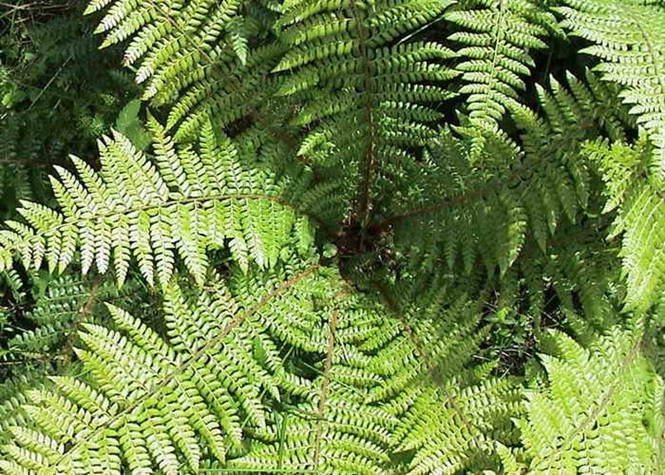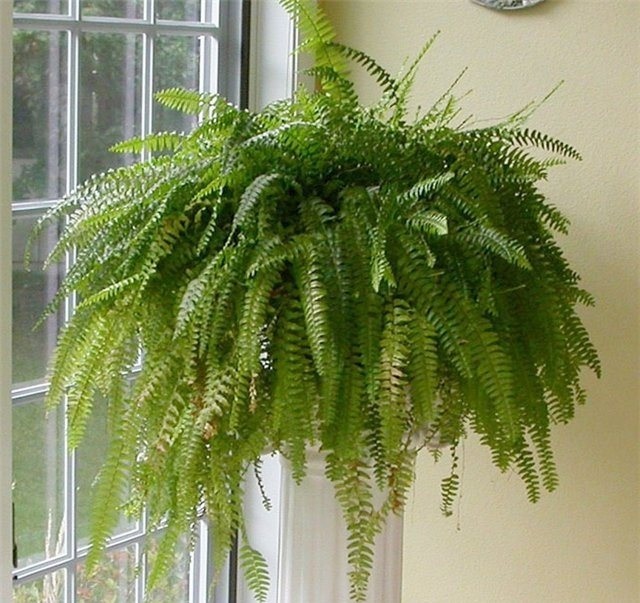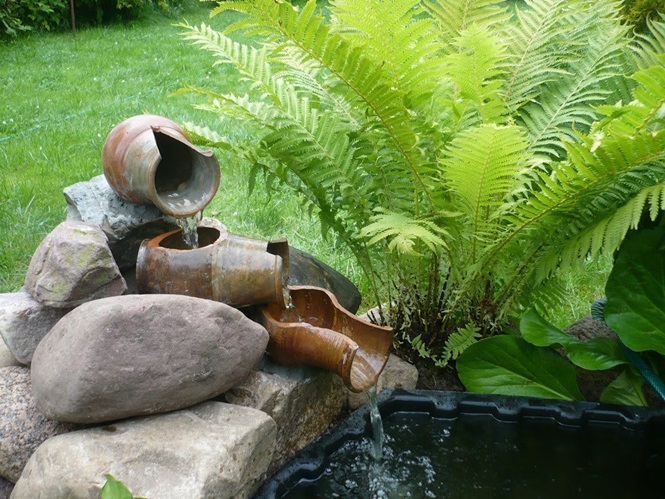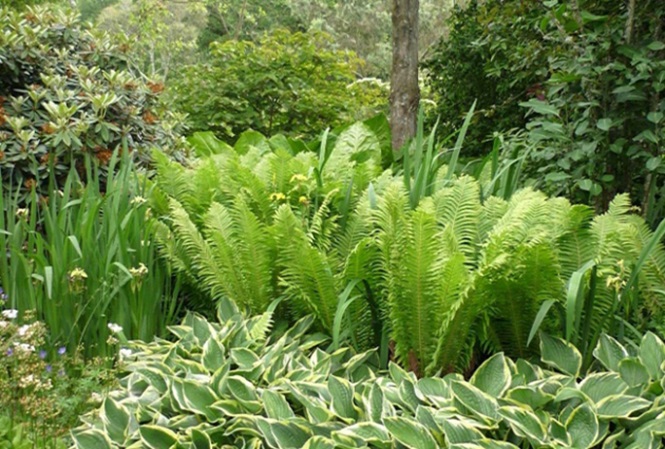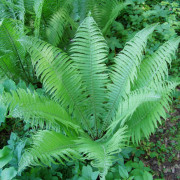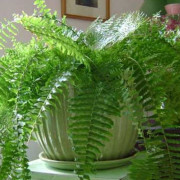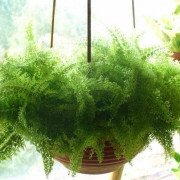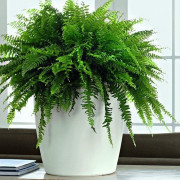Is it possible to keep a fern at home
Content:
Fern color is one of the most powerful protective amulets of the ancient Slavs. This plant reveals the purity of the soul, helps in healing. The amulet is considered fiery because of its patron - Perun. Perunov color is another name for fern. Legendary properties are inherent in the flower. According to legend, whoever finds a blooming fern will receive incredible luck and wealth.
Fern in the garden and at home, is it possible to keep
It is worth considering whether it is possible to keep a fern at home, because for different people, treasure means different things. If one yearns for wealth and fame, then the other quietly dreams of a family. It is believed that the plant fulfills innermost dreams.
The exclusivity of the amulet
The symbol resembles a flower remotely. The name reflects all the uniqueness of the amulet, its exclusivity. Buying a flower is not a magic bullet that solves all problems. Keeping a fern at home gives a person the opportunity to develop spiritually, as a result of which the set goals are achieved. This emphasizes the second name of the amulet - the flower of Perun. Perun patronized the creators, and the flower in ancient times signified high skill and significant achievements.
Meanings of the amulet:
- attracts good luck;
- unlocks potential;
- builds character;
- protects from the evil eye.
Is it possible to plant a fern at home
People are advised to buy a flower for whom material wealth is not in the first place. It is important to appreciate the other components of life: family, children, creativity and inspiration. For those who dream of a guiding star that will show the way to the fulfillment of the secret, the amulet will help. A plant of this species is suitable for honest people who do not achieve their cherished by any means. Creative personalities also acquire them, because Perun himself invests energy in their potential.
Possessing a talisman, a person will be able to appreciate any achievements, both his own and those of others. The fern owner gains wisdom, the path of spiritual development opens up for him, which makes a person correctly prioritize. It is believed that after buying a flower, there will be a way out of even the most insoluble situation. This flower is predominantly a man's amulet. In ancient Slavic mythology, he is associated with a magic key that opens all doors.
Features of the amulet
Owners of the amulet in the form of a fern should remember that it needs regular cleaning, feeding, spraying the leaves, otherwise it will simply lose its strength. It should be watered regularly, carefully looked after so that the flower does not cease to act as a talisman for the home. Is it possible to keep a fern in the apartment? The plant can be kept in any part of the house, but preferably in an area hidden from prying eyes.At the same time, he attracts less attention and copes with his task better.
Negative omens and superstitions
There are not so many of them and they are associated with the fact that some species of fern are poisonous. You need to carefully choose the right variety to buy. It is believed that the fern acts as an energy vampire - it takes energy away from the household, which makes those living in the house feel worse. This is not to say that there is no grain of truth in this sign - the acquisition of a poisonous variety can affect health.
Can street ferns be planted at home?
Some fern varieties are poisonous. They should not be placed in homes where there are pregnant women, small children, and animals. You can not keep a fern for allergy sufferers - it multiplies by spores, which is an allergen. The plant uses too much oxygen at night. In the morning, the owner may have a headache. Poisonous varieties:
- bracken fern;
- male fern (male fern).
Negative impact on a person
The plant is beneficial and harmful at the same time. Before purchasing a plant, it is necessary to consult with a general practitioner, homeopath or herbalist. If this rule is not followed, contact with a fern or the use of a medicine made from a fern may cause the following symptoms:
- urge to vomit;
- Strong headache;
- convulsions;
- dizziness;
- in rare cases, even death is possible.
If the above symptoms appear, you should immediately consult a doctor and rinse the stomach.
Other contraindications
It is contraindicated to use drugs prepared on the basis of bracken fern for such ailments:
- various kidney diseases;
- stomach ulcer;
- liver disease;
- tuberculosis;
- a number of chronic diseases.
How to grow indoor ferns?
The plant feels great in the bathroom. It will help create a special coziness there if you make the backlight with a fluorescent lamp. A plant from tropical countries. It lives in the crevices of limestone rocks and prefers shade. In summer, the maidenhair is shaded from direct sunlight. Can a fern be planted at home?
Venus hair is moisture-loving, and its fronds are the first to react to a lack of moisture. They dry up and die. But you shouldn't throw the plant away. Its aerial part is cut off, placed closer to the light, and watered abundantly. After a while, green balls appear - the growth of new leaves has begun. The plant continues to live. Propagate it by dividing the rhizome. Before and after transplanting, the soil in the pot is abundantly moistened. In the future, 2 times a month they are fed with one of the liquid solutions of mineral fertilizers.
What are the benefits of fern
Bracken fern leaves are used by farmers from decay. Veterinarians will be used in the treatment of epidemic diseases in animals and birds. With the help of fern rhizomes, wool is dyed black and various shades of yellow. The leaves of the plant give the green and olive color used to dye silk. It is used as a repellent against bedbugs, ticks, cockroaches and flies.
Agrotechnical characteristics
Ferns are one of the many groups of spore plants.They are resistant to large amounts of moisture, plastic, and have a variety of leaf shapes. There is a developed branch system. Plants reproduce both by spores and vegetatively.
Types of winter-hardy varieties that can be planted in open ground:
- female kochedyzhnik;
- common ostrich.
The best place to land
Plants love moisture and shade, which is important when choosing a site for planting. They are pretty unpretentious. They do not need feeding. To correctly calculate the distance between the bushes and the planting depth, you need to know the size of the plant in the future.
Lighting
Limit direct sunlight. Ferns can grow in complete darkness. Diffused sunlight is best for them for comfortable development.
The soil
The soil should be loose, moisture permeable well. So that the water does not stagnate, sand is added to the ground as drainage. It is worth making sure that part of the soil in which it grew before remains on its roots.
Plant care
After planting, make sure that the ground is moist. Every 4 years, the fern is thinned, damaged leaves are removed as necessary. Pests do not touch these plants, which makes them easy to keep. In the first year, they constantly need moisture. Moisturizing is required not only for the roots, but also for the leaves, which must be sprayed periodically. Maintaining a constant moist state of the soil, make sure that the water does not stagnate.
Top dressing
The plant does well without various types of fertilizing. If the leaves begin to turn yellow, minerals and nutrients are added to the soil, which are introduced along with water.
When to transplant
It is best to replant the plant in the spring. Dig it out very carefully, as the roots are easily injured. The planting hole should be shallow. After that, the plant is watered. In the fall, they choose a suitable bush, tilt the branches and cover them with damp earth.
The fern needs special attention and care only in the first year. Particular attention during this period is concentrated on the condition of the soil. If it stagnates, the fern dies. If all the recommendations are followed, the plant will be a wonderful decoration for any suburban area.
